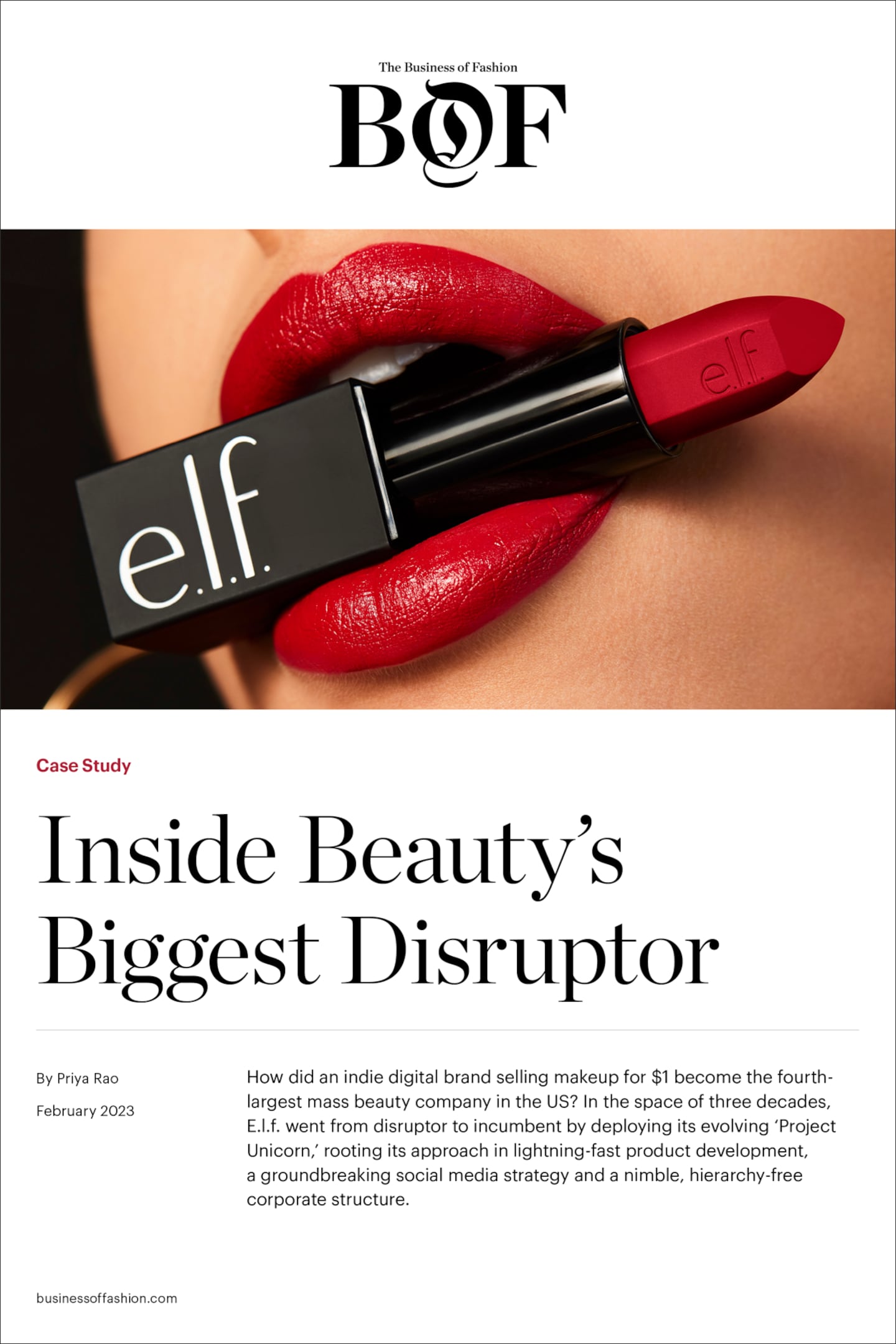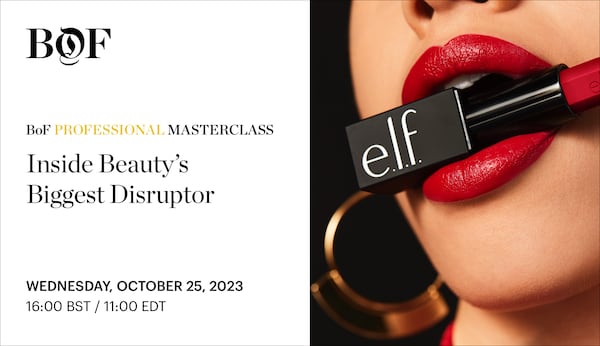
The Business of Fashion
Agenda-setting intelligence, analysis and advice for the global fashion community.

Agenda-setting intelligence, analysis and advice for the global fashion community.

In 2004, the idea of selling $1 lipstick on the internet was radical.
But months after its founding, E.l.f. was transforming the way consumers thought about beauty doing just that. Co-founders Joey and Alan Shamah’s proposition of making inexpensive yet quality makeup for every eye, lip and face — e.l.f. — was paying off. Shoppers realised they didn’t have to spend more than $10 for makeup and they certainly didn’t have to go to stores to find their favourite new products. As for having to ask a store associate for information about a pencil or eyeshadow, forget it — consumers could just read reviews or look at ratings on eyeslipsface.com.
The buzz around E.l.f. was building and it could be found in all corners of the internet, from DailyCandy to YouTube. Those in the know, knew. In its first year, the brand generated $1.5 million in sales with an internal team of just seven. In 2016, E.l.f. went public and was valued at $1.1 billion.
“So much of [the] brand history happened somewhat accidentally,” said Vennette Ho, managing director, global head of beauty and personal care at Financo Raymond James. “But [E.l.f.] tapped into something before the rest of the beauty industry recognised it, which was the power of digital and virality. And from there, it forever changed the beauty industry.”
ADVERTISEMENT
With its fast product turnarounds of 26 weeks and digital savvy, it became bigger: By 2016, it had 22 retail stores and a slew of US partnerships with Target, Walmart and more.
But E.l.f.’s rocketship began to slow when mega-influencer brands such as Huda Beauty and Kylie Cosmetics popped up along with a new class of digital disruptors like Glossier. In 2018, the company reported that annual net sales were down 3 percent year on year. Investors like Marathon Partners Equity Management openly called attention to E.l.f.’s stock price, which had fallen 51 percent since its IPO on the New York Stock Exchange, and questioned the company’s leadership.
Tarang Amin, E.l.f. chairman, president and chief executive, having joined the company in 2014, decided to close all of the brand’s stores in 2019 to focus on national retailers and its digital footprint. Many in the beauty industry thought E.l.f.’s moment could be over.
Around the same time, E.l.f. put the pieces in place for a strategy called “Project Unicorn,” which repackaged products to make it easier for customers to find them on store shelves. It also worked to get more items onto those shelves. Project Unicorn also centred around hero products, or core items that could be leveraged to build category franchises in concealers, brushes and more. Amin acknowledged the company needed to be louder about its proposition — back then, it had no formal marketing department — and re-directed the $16 million it was spending on stores every year into awareness.
Fast forward four years, and E.l.f. mounted a hard-to-believe comeback. For the nine-month period ended Dec. 31, 2022, the company reached $95.5 million in profits on $391 million in net sales, marking its 16th consecutive quarter of sales growth. Also in 2022, the brand overtook 91-year-old Revlon to become the fourth-largest mass company in the US by sales, according to market research firm Nielsen.
But how did E.l.f. do it?
This case study unpacks the pillars underpinning E.l.f.’s strategy that other beauty companies can adapt for their own businesses, regardless of whether they are in turnaround or growth mode. E.l.f. became one of the fastest-growing and most profitable businesses in beauty by overhauling its product offering to be even more accessible and relevant across mass and prestige categories, and extending an aggressive first-to-market marketing and social media strategy. The company also held on tight to its digital roots, allowing its community to drive both sales and conversion; in 2023, E.l.f. made its television debut at the Super Bowl with a product that had been a viral fan favourite on TikTok. Operationally, it leaned on the right team — one that was able to make and execute decisions, regardless of risk.
Editor’s note: This case study was revised on Feb. 27, 2023, to correct the spelling of Vennette Ho’s name. A revision on Feb. 28, 2023, noted that E.l.f. has been operating for almost two rather than three decades; it had paid down a large portion of its debt when it went public; and skin care accounts for less than 10 percent of its net sales. An incorrect statement about its cash-to-debt ratio was also removed.

As in-person retail continues to recover, store owners and marketers are working hard to press the main advantage analogue shopping has over digital: its appeal to all the senses.
What had once been a nimble, innovative company, became slow-moving and cautious causing it to miss out on what is now a strong beauty market because it retreated precisely when rivals went all in.
According to an email viewed by The Business of Beauty, the company will be on hiatus while it establishes a sustainable path to return as a new company.
The surfing legend, a vocal opponent of chemical-based sun protection, is launching his own line of natural skincare products this week.